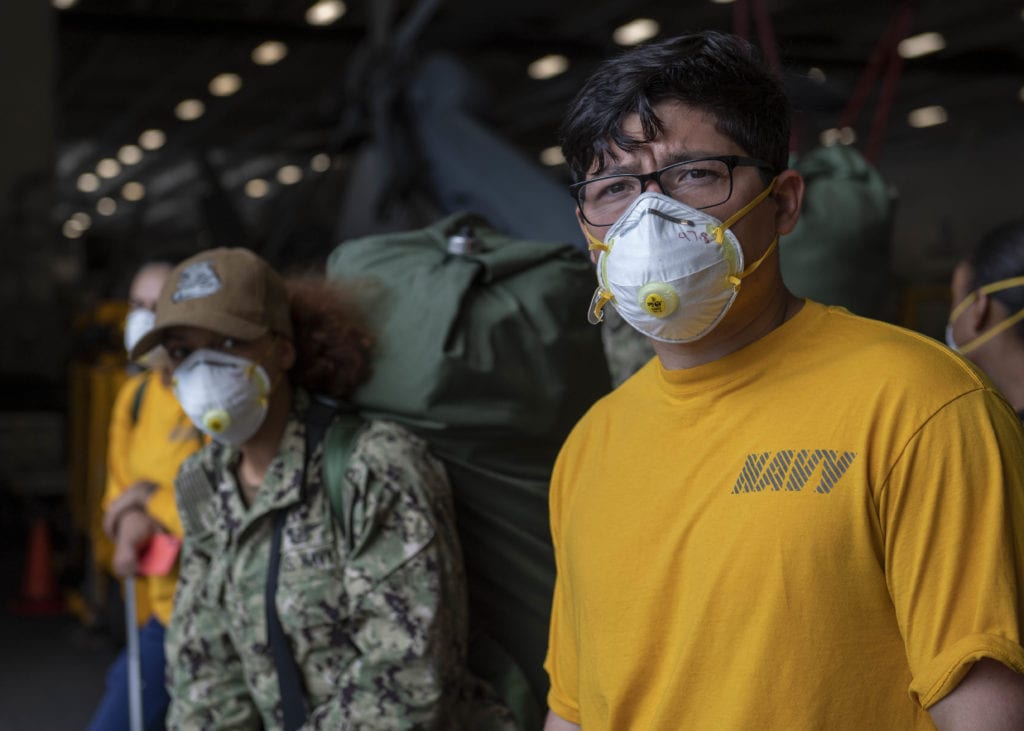
ARLINGTON, Va. — Defense Department officials are reportedly split on reinstatement of Capt. Brett Crozier following his ouster as commander of the aircraft carrier USS Theodore Roosevelt earlier this month by then-Navy Secretary Thomas Modly.
After the end of a preliminary investigation into Crozier’s dismissal, top U.S. Navy officials announced April 24 that a recommendation on Crozier’s fate had been delivered to Modly’s replacement, acting Navy Secretary James McPherson, and that McPherson was still in talks with Defense Secretary Mark Esper on the question of restoring Crozier to his previous position.
See: Navy Provides Medical Care to Infected Sailors of USS Kidd, Will Disinfect Ship
See: Military Consumers React to Life During Pandemic
However, several media outlets have reported April 24 and since that McPherson and Chief of Naval Operations Adm. Mike Gilday recommended that Crozier be restored to his former command.
Another outlet said Chairman of the Joint Chiefs of Staff U.S. Army Gen. Mark Milley wanted to pump the brakes and recommended a longer and more detailed investigation before Crozier’s status is determined.
Rep. Adam Smith (D-Wash.), chairman of the House Armed Services Committee, emphatically weighed in April 24 in favor of Crozier’s reinstatement. “The secretary of defense needs to reinstate Capt. Brett Crozier as commanding officer of the USS Theodore Roosevelt,” Smith said in his statement.

The Navy was less committal, at least publicly, that day — so a final decision may take days or weeks longer. President Trump may also reportedly weigh in.
“This afternoon, Secretary Esper received a verbal update from the acting secretary of the Navy and the chief of naval operations on the Navy’s preliminary inquiry into the COVID-19 outbreak on the [Roosevelt],” Jonathan Rath Hoffman, public affairs assistant to Esper, said April 24.
“After the secretary receives a written copy of the completed inquiry, he intends to thoroughly review the report and will meet again with Navy leadership to discuss next steps. He remains focused on and committed to restoring the full health of the crew and getting the ship at sea again soon.”
Gilday directed Vice Chief of Naval Operations Adm. Robert Burke to investigate the circumstances and climate of the entire Pacific Fleet “to help determine what may have contributed to a breakdown in the chain of command,” Modly said April 2, the day he announced that Crozier was relieved of his command.
A day earlier, at a press briefing on the Roosevelt virus outbreak, Gilday spoke of “a potential comms breakdown, wherever it occurred,” adding “we’re not looking to shoot the messenger here, we want to get this right.”
Crozier was fired by Modly after a March 30 letter the captain wrote to top Navy officers and fellow naval aviators leaked to a San Francisco newspaper, the San Francisco Chronicle, which published a story the next day. The publication of the letter sparked an outcry and worldwide media attention over Crozier’s actions and the fate of the carrier’s crew.
“The secretary of defense needs to reinstate Capt. Brett Crozier as commanding officer of the USS Theodore Roosevelt.”
Rep. Adam Smith, House Armed Services Committee chairman
A week later, Modly added fuel to the fire with a profanity-laced speech criticizing Crozier in front of the nuclear carrier’s crew that went viral on social media. Modly had to resign the next day, April 7, in the wake of the expanding controversy.
At the time Crozier wrote his letter, three Sailors on the Theodore Roosevelt had tested positive for COVID-19, but many more were later found to be infected after the carrier made a scheduled port visit to Guam. As of April 25, the Navy reported that the entire crew had been tested for the virus, with 833 total positive and 4,105 negative results. A small number of results were pending, the Navy added. Of the total cases, 112 Sailors have recovered and 4,273 Sailors have moved ashore.
Two Sailors assigned to the Roosevelt were in U.S. Naval Hospital Guam under treatment for COVID-19 symptoms. None of those hospitalized for the virus was in the intensive care unit. However, one Sailor from the Roosevelt did die there earlier this month from complications of the infection, the Navy reported.
In his letter, the captain wrote that he believed the carrier had inadequate space to isolate or quarantine Sailors. He also pleaded for faster intervention from his superiors to assist his crew. “We are not at war. Sailors do not need to die,” Crozier wrote. “If we do not act now, we are failing to properly take care of our most trusted asset — our Sailors.”
He was hailed as a hero by his crew — who were seen on video cheering him on during his departure from the ship in Guam — as well as some in and out of the military, while others criticized him for circumventing the Navy’s chain of command.
“What we’ve learned from the TR is very informative,” Hoffman said April 24 of the rapid rise of COVID-19 cases on the carrier.
That has led to a priority-based, tiered system of testing starting with critical national capabilities, like strategic nuclear deterrent units, working its way through fielded forces around the world, forward-deployed and redeploying forces and the rest of the force.
Meanwhile, an embarked medical team continues testing aboard the guided missile destroyer USS Kidd in the eastern Pacific, where 33 Sailors have tested positive for COVID-19. Two Sailors have been medically evacuated to the United States. Sailors aboard the Kidd are wearing PPE and N95 masks. The amphibious ship USS Makin Island, with a fleet surgical team, ICU capacity and ventilators and additional testing capability, is en route to rendezvous with the Kidd in case medical support is required at sea.
The Navy continues to lead all armed services with 1,659 cases of the novel coronavirus, followed by the Army with 995, the National Guard with 792, the Air Force with 347 and the Marine Corps with 304, according to the latest data released by the Defense Department on April 27. There have been only two deaths among military personnel.
Seapower Correspondent John M. Doyle contributed to this report.






